Invited speakers
|

webpage
|
Olof Johansson
Olof Johansson is a lecturer in the School of Chemistry at the University of Edinburgh. He is interested in light-induced spin dynamics in a range of large transition metal complexes with exchange-coupled electrons, ranging from single-molecule magnets to magnetic coordination polymers. Olof received his MSc in Physics from Gothenburg University in 2007 and PhD in Chemistry from the University of Edinburgh in 2011. He held a Royal Society of Edinburgh/BP Trust Research Fellowship from 2014 to 2019. He was awarded the Fraser and Norma Stoddart PhD Prize in 2013 from the University of Edinburgh. In 2016 Olof became a member of the RSE Young Academy of Scotland.
Photophysics • Magnetic circular dichroism • Thin films • Spin crossover
|
|
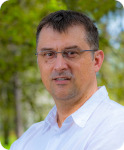
webpage
|
Rodolphe Clérac
Rodolphe Clérac was born in 1971 in Versailles (France), received his education in Physical-Chemistry at the University of Bordeaux 1, France. His Ph.D. work was devoted to the physical properties of molecular antiferromagnetic materials under the supervision of Prof. C. Coulon (in 1997). After short post-doctoral stay in the group of Prof. O. Kahn (ICMCB, Bordeaux), he joined in 1998 Prof. K. R. Dunbar’s group at Michigan State University (East Lansing, Michigan, USA) and worked on the magnetic properties of coordination chemistry based materials. In 1999, he moved with Prof. K. R. Dunbar’s group to Texas A&M University (College Station, Texas, USA) where he collaborated with Prof. F.A. Cotton on the magnetic properties of metal-metal bonded complexes. He joined the University of Bordeaux 1 in 2000, as associate professor, then in 2008 became full CNRS researcher. He was elected in 2019 at the European Academy of Sciences and in 2020 at the Academia Europaea, and received various awards including the CNRS Silver Medal in 2021 and the France-Berkeley Fund Award in 2017. Since 2000, Dr. R. Clérac has developed at the Centre de Recherche Paul Pascal a research group interested in the synthesis and physical studies of molecular materials including molecule-based magnets, switchable paramagnetic complexes, and magnetic solutions and liquid-crystals.
Molecular magnetism • Molecule-based magnets • Bistable and switchable paramagnetic complexes • Molecular materials
|
|
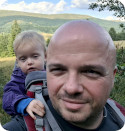
webpage
|
Dawid Pinkowicz
Dawid Pinkowicz (1983) holds the associate professor position at the Jagiellonian University, Faculty of Chemistry since 2018. His research interests revolve around photomagnetism, photoswitching and magneto-chiral phenomena in a wide range of molecule-based materials: from organic radicals through organometallic lanthanide single-molecule magnets and cyanide-bridged coordination polymers with long-range magnetic ordering. He received his PhD from the Jagiellonian University in 2010 (Prof. Barbara Sieklucka) followed by two post-doc stays at the Tohoku University (Prof. Masahiro Yamashita) and Texas A&M University (Prof. Kim R. Dunbar). He received several awards including the most prestigious one in Poland - the National Science Centre Award 2019 for the best young scientist under 40 in the field of physical sciences and engineering. Currently he is supervising several talented PhD candidates and students within his research group and organizing a new Magnetochemistry Laboratory at the Jagiellonian University in Kraków.
Photomagnetism • Photoswitchable molecules • Chiral magnets • Molecular magnetic sponges
|
|
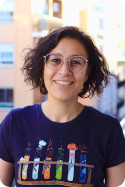
webpage
|
Alicia Forment-Aliaga
Alicia Forment-Aliaga (Valencia, 1976) is a researcher at the Molecular Science Institute (ICMol) and a senior lecturer in the School of Chemistry at the University of Valencia (UVEG), Spain. She graduated in Chemistry and carried out her PhD on molecular magnetism at the UVEG, supervised by Prof. E. Coronado and Prof. F.M. Romero. Between 2004-2008 she joined Prof. K. Kern’s group as a postdoctoral researcher at Max-Planck Institute for Solid Sate Research in Stuttgart, Germany. During this period, she was awarded with different competitive postdoctoral grants for developing her research on molecular electronics. Since July 2008 she works at ICMol at the UVEG, in Prof. E. Coronado’s group. This period comprises a postdoctoral Juan de la Cierva contract and a tenure-track Ramón y Cajal contract, both competitive contracts granted by the Spanish Government, and her current position as senior lecturer. At the ICMol she has developed a line of research in molecular surface engineering and in the last years, she has also started working on 2D materials. Particularly, she has driven her research into four specific goals: (1) Non-conventional lithographies for the organization of molecular systems; (2) formation of self-assembled monolayers for molecular spintronics; (3) scanning force microscopies for surface modification and characterization and (4) 2D materials, targeting their exfoliation, molecular functionalization and application in different areas.2D materials, molecular magnetism, self-assembled monolayers, scanning probe microscopies, molecular electronics, molecular spintronics
2D materials • Molecular magnetism • Self-assembled monolayers • Scanning probe microscopies • Molecular electronics • Molecular spintronics
|
|

webpage
|
Roberta Sessoli
Roberta Sessoli developed her career at the University of Florence where she is full professor since 2012. She played a key part in the original discovery of single-molecule magnets (SMM), a broad class of molecular materials in which non-interacting molecules exhibit magnetic memory (hysteresis and coercive field) and quantum effects. This seminal discovery opened up an entirely new field for scientists, towards nanotechnologies. Her current interests include the interplay between magnetism and chirality, magnetic molecules on surfaces to form hybrid interfaces for spintronics, and molecules with highly coherent spin dynamics for quantum information. She has co-authored more than 380 publications that have received more than 40000 citations. Her current h-index is 96. For her scientific achievements she has been selected as a member of the Science and Technology Advisory Council of the President of the European Commission. She is a member of the Accademia nazionale dei Lincei, of the Academiae Europaeae and of the European Academy. She is Associate Editor of the Inorganic Chemistry journal of the American Chemical Society. She received prestigious prizes such as International Galileo Galilei award (2021), The Malatesta Award of the Italian Chemical Society (2020), the González-Ciamician Award of the Royal Chemical Society of Spain (2020), the Centenary Prize of the Royal Society of Chemistry (2019), the Distinguished Woman in Chemistry award from IUPAC (2015), the Lecoq de Boisbaudran award from the European Rare Earths Society (2015), the Prix Franco-Italien (2013), and the Agilent Technologies Europhysics prize (2002). In 2010 she has been awarded with an ERC Advanced Grant.
Molecular magnetism • Single-molecule magnets • Chirality • Magnetic molecules on surface • Molecular spintronics • Quantum information
|
|

webpage
|
Selvan Demir
Selvan Demir is an assistant professor of chemistry at Michigan State University and inorganic faculty with a strong emphasis on lanthanide and actinide chemistry. Her research interests are a) small molecule activation, b) organic radicals, c) single-molecule and single-chain magnets, d) molecular lanthanide qubits, e) activation of bismuth, and f) dibenzocyclooctatetraene and salophen chemistry. She represents one of the experimental Quantum Information Science (QIS) faculty of the MSU Center for Quantum Computing, Science, and Engineering, and is a member of the Midwest Quantum Collaboratory. She has served as an invited organizer for magnetism symposia, such as Low-Dimensional and Molecular Magnetism at American Physical Society (APS). Selvan has thus far given 17 talks and 66 invited lectures in 18 countries with more lined up in 2022. She received a Master’s degree (with distinction) in chemistry from the University of Cologne, and was awarded a PhD fellowship from the Fonds der Chemischen Industrie to conduct research on scandium solid state chemistry with Prof. Gerd Meyer and scandium organometallic chemistry with Prof. William J. Evans at the University of California, Irvine earning her a PhD Degree (Dr. rer. nat.) with summa cum laude in 2010. She received the Klaus Liebrecht award 2011 of the University of Cologne for the best thesis across all natural sciences. From 2011 to 2015, she conducted postdoctoral research primarily on lanthanide-based single-molecule magnets and porous aromatic frameworks with Prof. Jeffrey R. Long at the University of California, Berkeley, where the first half was supported through an awarded DAAD fellowship. She was a postdoctoral research affiliate at the Lawrence Berkeley National Laboratory with Dr. David K. Shuh largely focusing on neptunium, plutonium, and americium. Selvan served as a junior professor of inorganic chemistry at the University of Göttingen and moved to Michigan in 2019.
Molecular magnetism • Single-molecule magnets • Radical-bridged SMMs • Molecular lanthanide qubits • EPR spectroscopy • Organometallic chemistry with lanthanides, uranium and bismuth
|
|
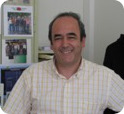
webpage
|
Azzedine Bousseksou
Azzedine Bousseksou is Exceptional Class Research Director (DRCE2) at the CNRS, France. He is Director of the CNRS Laboratory of Coordination Chemistry in Toulouse since 2013 and leader of the “Switchable Molecular Materials” Team. He is member of the French Academy of Sciences, the European Academy of Sciences, the European Academy of Sciences and Arts, and funding member of the Algerian Academy of Science and Technology and was awarded trestigious Süe Price of the French Society of Chemistry in 2020. He is internationally renowned in the fields of molecular switches and molecular magnetism. With more than 300 articles and 12 patents, he provided major impetus to the development of pioneering research on spin crossover nanomaterials, including the synthesis of various nano-objects (nanoparticles, thin films and nanopatterns), the experimental and theoretical analysis of finite size effects in these objects and their integration to a new generation of nanophotonic, nanolectronic and spintronic devices. Key scientific achievements include the development of a theoretical model of spin crossover which is today the most used worldwide and prediction of symmetry breaking phenomena in spin crossover materials with subsequent experimental validation; the discovery of a hysteresis loop of the dielectric constant in spin crossover materials leading to the first patent of memory device using spin crossover materials; the first demonstration of reversible, light-induced spin-state switching at room temperature aimed for information storage; the elaboration of the first spin-crossover nano-objects maintaining bistable behaviour at room temperature including thin films, nano-patterns, hybrid fluorescent/plasmonic nano-objects and ultrasmall nano-particles; the development of a new generation of devices based on spin crossover nanomaterials including active plasmonic devices, diffractive gas sensors, nanothermometers as well as nanoelectronic and spintronic devices; the comprehensive interpretation of finite size effects in spin crossover nano-objects; the recent development of switchable molecule-based materials for micro- and nanoscale actuating applications.
Molecular magnetism • Molecular switches • Spin-crossover nanomaterials • Nanoelectronics • Spintronic devices • Nanoscale actuators
|
|

webpage
|
Natia Frank CANCELED
Prof. Natia L. Frank received her Bachelor’s degree with Honors from Bard College in 1987 (Chemistry, Math, Music), an M.Sc. in Inorganic Chemistry at the University of Wisconsin-Madison (1989), and Ph.D at the University of California-San Diego (1996, Organic Chemistry). She was a CNRS Postdoctoral Fellow with the late Prof. Olivier Kahn at the University of Bordeaux, France (spin-based materials), and an NIH Postdoctoral Fellow (Biomaterials, Prof. Thomas Meade/Prof. Harry Gray) at Caltech. She began her independent career in 2000 as an Assistant Professor at the University of Washington-Seattle in the study of multifunctional magnetic materials for spintronics and biosensing. In 2005, she was recruited as a Canada Research Chair Tier II in Multifunctional Materials Chemistry at the University of Victoria where she developed optically switchable spin-based qubits for quantum science. In 2012, she was a Visiting Scholar at Humbolt University (Physics), Berlin, Germany, and University of Rennes (Chemistry), France. In 2020, she joined the University of Nevada-Reno as Associate Professor of Chemistry. Her primary expertise is at the interface of organic chemistry, inorganic chemistry, spin-based materials and photochemistry/electron transfer theory which allows her to be well-situated to address current challenges in molecular quantum information science: the design of molecular qubits with long decoherence times, multiqubit arrays, and qubits/qudits that can respond to external stimuli for quantum computing and sensing. Prof. Frank currently serves on two funded DOE EFRC advisory boards in quantum science, the ACS-PRF Advisory Board, and has served on numerous NSF funding panels in quantum relevant areas.
Spintronics • Spin-based materials • Molecular quantum information • Photoactive quantum materials • Charge-storage materials
|
|

webpage
|
Alessandro Lunghi
Alessandro Lunghi obtained his PhD in computational inorganic chemistry in 2016 under the supervision of Prof. Totti. His PhD dissertation focused on the computational and theoretical investigation of molecular magnets and their interaction with typical solid-state environments. In 2016 he joined the School of Physics at Trinity College Dublin as a research fellow and started working on machine-learning methods for the design of new molecular materials and first-principles theory for spin relaxation in magnetic molecules. In 2020 he was awarded a European Research Council Starting Grant and in 2021 he was appointed as Assistant Professor in Physics at Trinity College Dublin, where is now leading his independent research group. Alessandro's group develops ab initio multi-scale computational strategies for the design of spin systems of interest for quantum science, magnetic resonance, spintronics and many other fields. We combine advanced electronic structure theory, open quantum system theory and machine learning in order to establish a rigorous understanding of spin relaxation in magnetic molecules and to design novel materials with application-tailored properties.
Ab initio simulations • Spin relaxation • Open quantim systems theory • Molecular qubits • Molecular magnets
|
|

webpage
|
Alexey A. Popov
Dr. Alexey A. Popov received M.S. (1999) and Ph.D. (2003) in chemistry from Moscow State University (MSU), Russia. He was a Senior Researcher at MSU until 2008, when he received an Alexander von Humboldt Fellowship to work on endohedral metallofullerenes with Lotar Dunsch in IFW Dresden (Germany), where he now heads the Fullerene group. His research interests include experimental and computational studies of metallofullerenes, including their synthesis, derivatization, molecular magnetism, electrochemistry, and photophysics. He was a recipient of ERC Consolidator grant for the studies of bulk and surface magnetism of metallofullerene-SMMs.
Endohedral metallofullerenes • Lanthanides • Metal-metal bonding • Molecular magnets • Monolayers
|
|
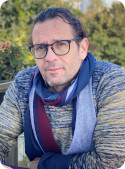
webpage
|
Guillem Aromi
Dr. Guillem Aromí graduated in Chemistry and Chemical Engineering at the University of Barcelona (UB) and EHICS (Strasbourg, France), both in 1993. He earned a Chemistry PhD at Indiana University (1999, USA) and did posdocts at Leiden University (2002, Holland) with a Marie Curie Fellowship and at Manchester University (2003, UK). He became in 2003 a “Ramon y Cajal” Fellow at the UB, then Associate Professor in 2007 and Full Professor in 2018. He received the distinction of Research by the Generalitat de Catalunya and the prize ICREA Academia 2008, 2013 and 2018. He received, in 2011, an ERC Starting Grant and has led Workpackages of QUANTERA and FET-OPEN Consortia, all on molecular spin-based quantum technologies. In 2018 he became Director of the Institute of Nanoscience and Nanotechnology of the UB (IN2UB). He is the coordinator of Sciences of AGAUR (Catalan Agency of University and Research Grants). He represents the Catalan Chemical Society at the Inorganic Division of EuChemS.
His main research lines are the following: A) Design and preparation of molecules for Quantum Computing (QC) through the coherent manipulation of spins. B) Preparation and study of switchable materials based on spin crossover (SCO). C) Preparation and study of magnetic photoswitchable molecules. D) Preparation and study Functional Supramolecular Assemblies.
Quantum computing • switchable materials • Spin crossover • Molecular magnets • Supramolecular assemblies
|

|
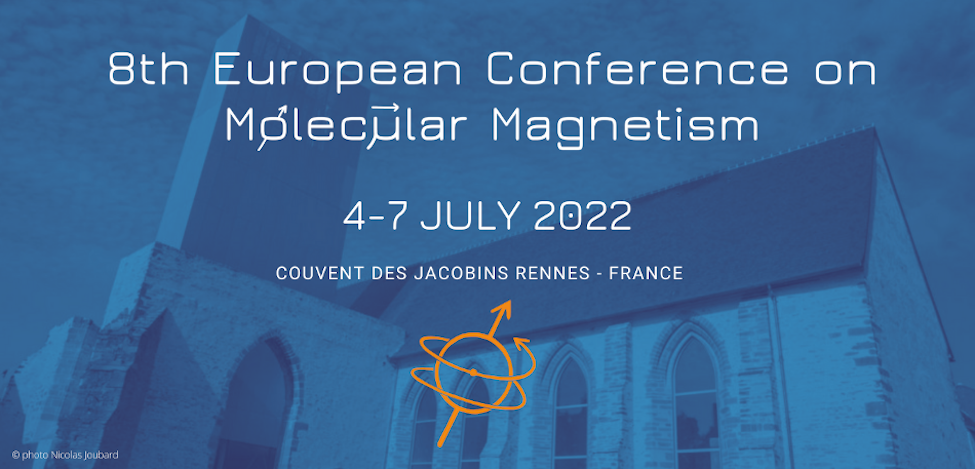

